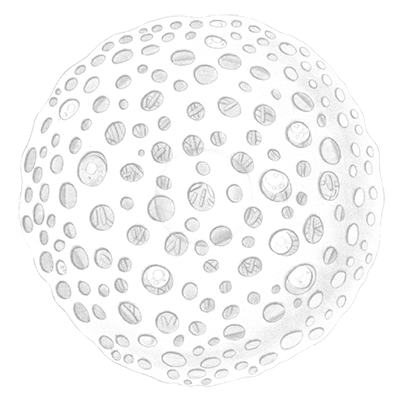About the Artist:
Tatiana Parcero (Mexico City, 1967) is a visual artist whose imagery continuously delineates themes of ritual, memory, territory, time and the intricate traditions of various cultures. Her oeuvre explores the body and its implicated connections to identity and the natural world, sometimes juxtaposing the human figure and found imagery; self-portraits covered in symbols and illustrations to metaphorically trace the lineage between her personal experiences as they relate to the broader human experience. Through her photographs, she examines the concept of change as it relates to global and contemporary themes as the everlasting kinship between man and nature. Since 2010 she works in images that explores the impact of climate changes and preserve the natural environment, using natural elements, animal bones and landscapes, as well as in photographic records of the feminist struggle in various parts of Latin America.
Tatiana Parcero earned her Master of Arts in the fields of Art Theory and Photography from New York University/International Center of Photography (NYU/ICP) and Bachelor’s Degree in Psychology from Universidad Nacional Autónoma de México (UNAM), Mexico City. She has exhibited nationally and internationally in biennials, individual and collective exhibitions around the world in venues such as The Museum of Modern Art (MoMA) New York, NY, Lowe Art Museum, Miami, FL, Houston Center of Photography (HCP), The Museum of Latin American Art in Long Beach, California (MoLAA), Museo Archivo de la Fotografía, Mexico City, The Museum of Contemporary Art (MOT) Tokyo, Japan, Havana Biennial and Festival Terre d’Images in Biarritz, France to name a few.
Ms. Parcero has received several photography and video Awards including a three-year fellowship granted by National System of Art Creators, National Fund for Culture and the Arts, Mexico (FONCA, 2011-14); 2nd prize, National Hall of Visual Arts, Argentina (2008); Acquisition Award, The Museum of Latin American Art (MoLAA, 2007) Long Beach, CA, USA, among others.
Parcero's work is in prestigious international collections, both private and public. Samples of her work may be found in such notable public collections as MoMA, New York, NY; The Museum of Fine Arts, Houston, TX; The Museum of Latin American Art, Long Beach, CA; Lowe Art Museum, Miami, FL; Museo de Arte Contemporáneo de Castilla y León, Spain; Museo de Arte Moderno de Buenos Aires, Argentina; Museo de Arte Contemporáneo de Puerto Rico; Instituto Nacional de Bellas Artes, México, among others.
She has two published books, Natura et Corporis (Artist Book) edited by Arts & Graphics, Cd. De México (2017) and Cartografías, edited by Artes de México (2008). In April 2022 her work will be at Our Selves, Photographs by Women Artists from Helen Kornblum, The Museum of Modern Art (MoMA), New York. Apr 16–Oct 2, 2022

About the Work:
Tatiana Parcero’s oeuvre explores the body and its implicated connections to identity and the natural world. Parcero juxtaposes the human figure, which in nearly all the work is her own, and found imagery. The work looks beyond the visible exterior, and the layers Parcero exposes are both literal and symbolic; beautiful and charged. She has integrated anatomical drawings, codices, colonial and astrological maps, chemical constructions, and naturalist-style drawings with images of the body.
We find Parcero’s use of the figure with these different elements works to reinforce her visual thesis. Parcero’s work has shown trespasses (Nuevo Mundo with colonial maps and codices, or Universus with visually broken landscapes), but more importantly proves it is we who draw lines of division that incur missteps. In truth, there are no borders, beginnings, or endings, just connections and inclusions. Rather than being redundant, Parcero’s work becomes meditative, reflexive, spiritual, even (Fin y Principio) station-like.
Her visual explorations harmonize and repetition of Parcero’s own figure through different series affirms the singularity and plurality of human the experience- one of many; all are one. The Body has then evolved as universal symbol, unit, or container connected to and composed of everything. We are not above Nature; we are of it and of all things.